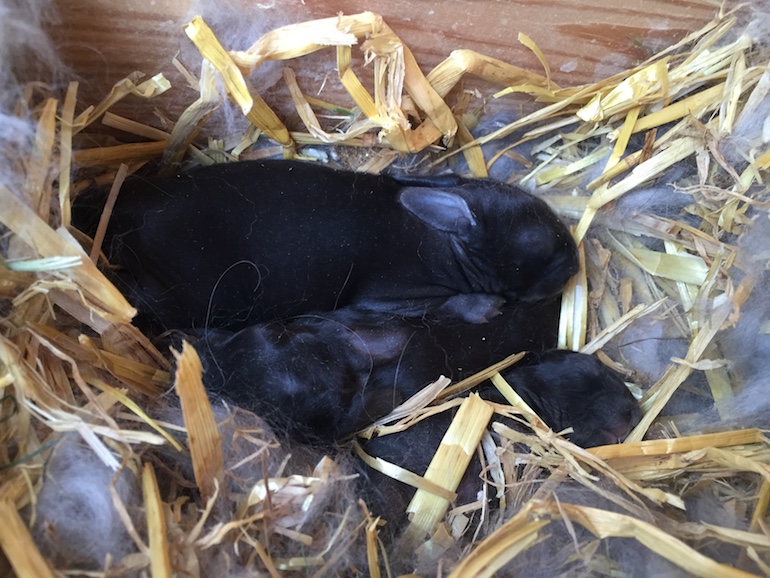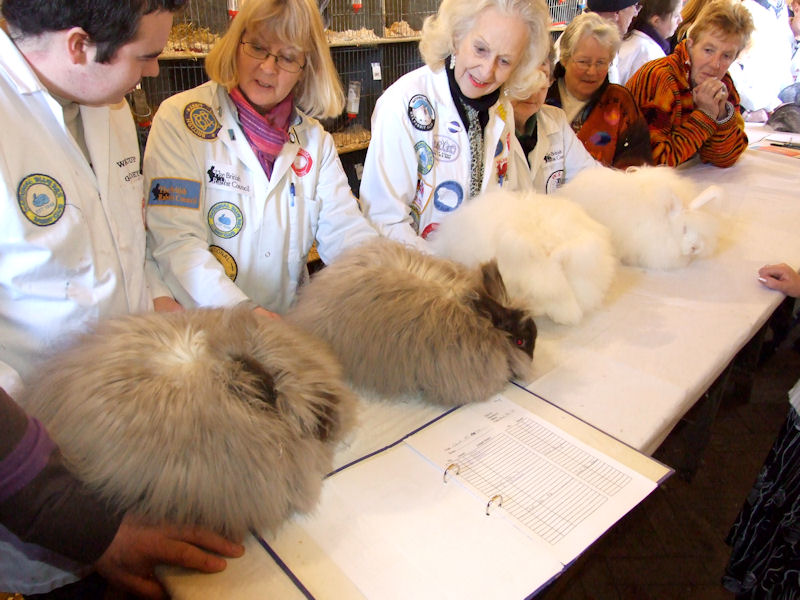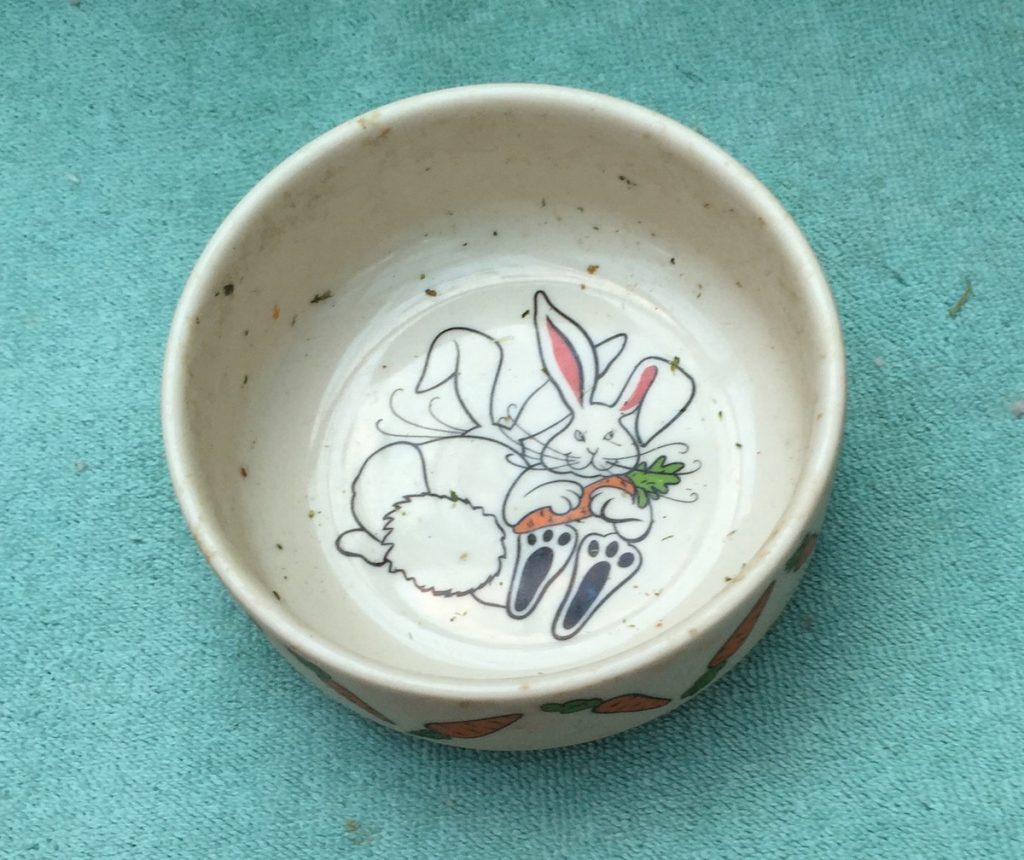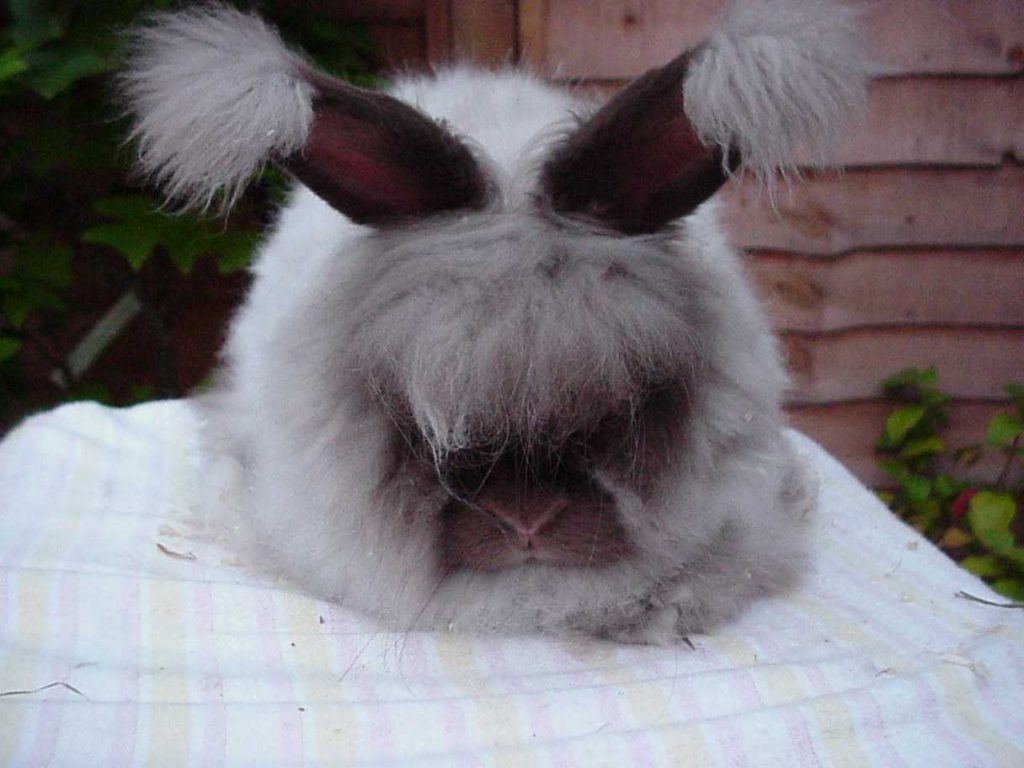
Most Angora owners clip their rabbit with hairdressing scissors, with the rabbit sat quietly on their knee. Injuries are extremely rare. In Britain rabbits are never restrained and relax into the positions required for clipping.
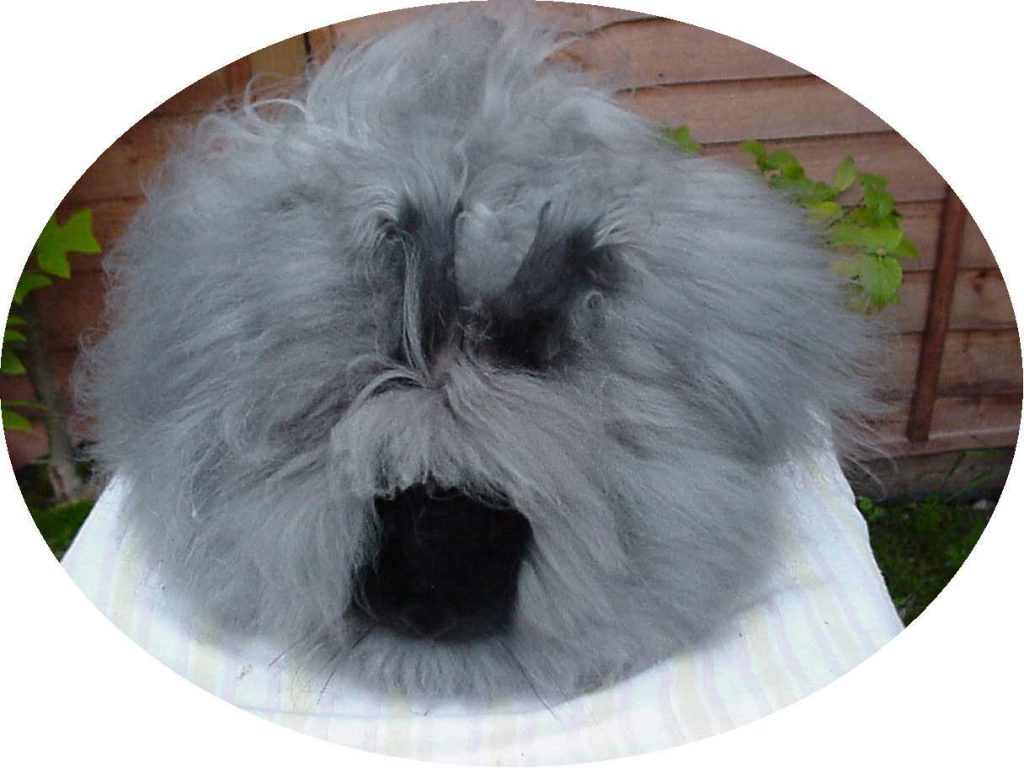
Before clipping
The clipping doesn’t hurt, and the rabbit is used to being groomed and handled from a very early age. It is done all over, with the exception usually of the main ear furnishing and the coat is cut above the surface of the skin to leave a light fuzz over the whole of the body.

During clipping the underneath
The underside is reached by turning the angora rabbit onto its back and working carefully with the scissors around the underneath of the body, legs, stomach, chin and around the tail.
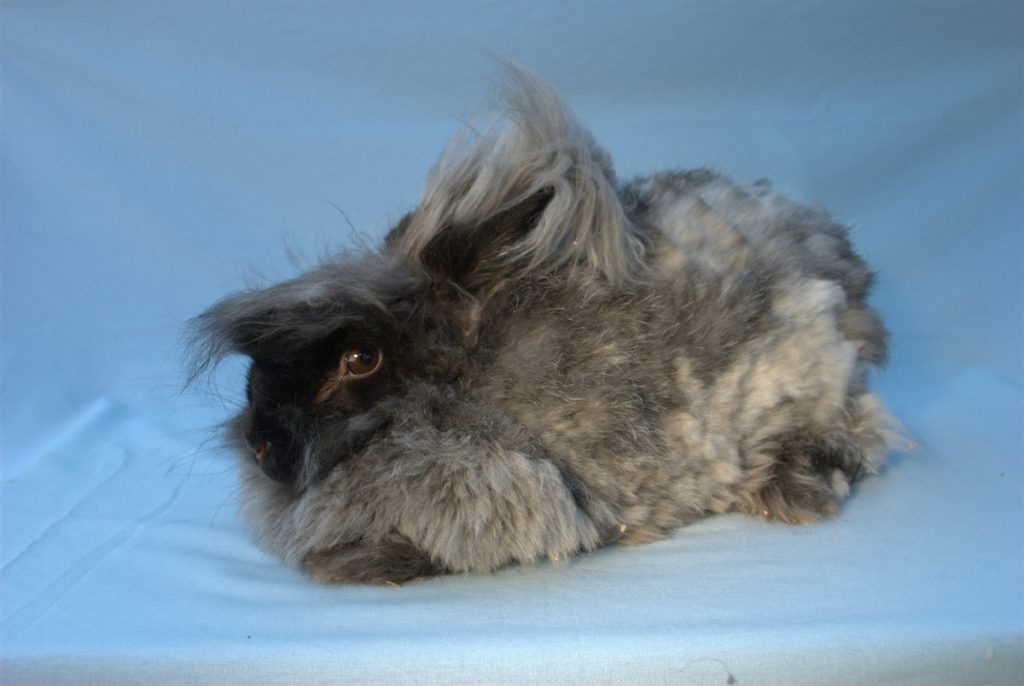
After clipping
The wool is clipped off as evenly as possible to avoid leaving one section longer than another. The underside wool is often discarded as this is usually not suitable for use as a wood product.








